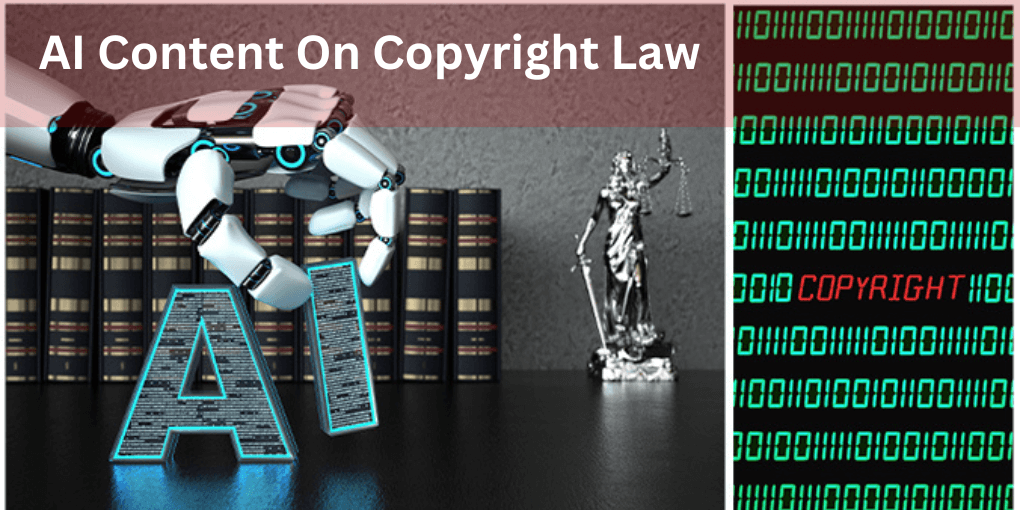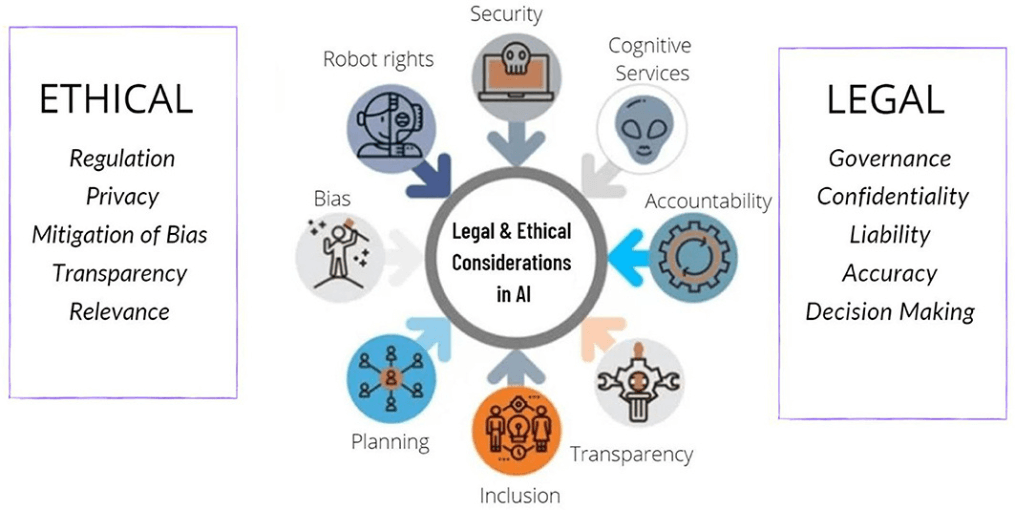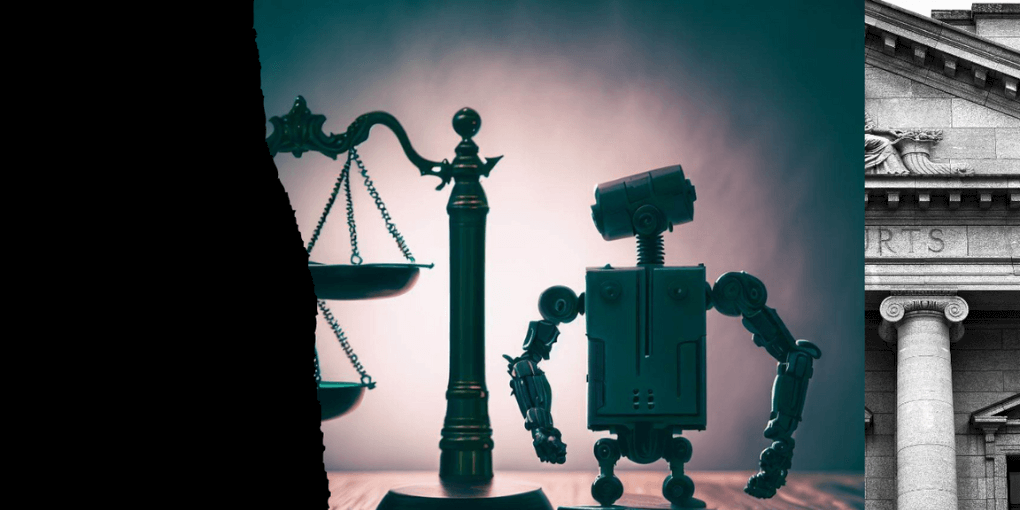AI (Artificial Intelligence) has revolutionized various industries, including content creation.

With AI algorithms becoming increasingly sophisticated, they can generate articles, blogs, and other textual content with remarkable accuracy.
However, this advancement in AI technology has also given rise to complex legal questions regarding copyright law and ownership of AI-generated content.
In this article, we will explore the intersection of AI content on copyright law, understanding the challenges it poses and potential solutions to protect intellectual property in the digital age.
Understanding Copyright Law
Before delving into the impact of AI on copyright law, it is essential to have a basic understanding of copyright principles.
Copyright law grants exclusive rights to authors of original works, such as literary, artistic, musical, or dramatic creations.
These rights include the reproduction, distribution, adaptation, and public display of the work. Copyright protection arises automatically upon the creation of a work in a fixed form, without the need for registration.
AI and Copyright Infringement
AI can play a role in copyright infringement, both as a tool for potential infringers and as a means to detect and enforce copyright violations.
Here are a few aspects to consider regarding AI and copyright infringement:
- AI as a Tool for Potential Infringers: AI technologies can be used to automate the creation, reproduction, or distribution of copyrighted works, potentially leading to infringement. For example, AI algorithms can generate text, music, or visual content that closely resembles existing copyrighted works, raising concerns about unauthorized copying or plagiarism.
- Copyright Liability: In cases where AI systems are employed to create or distribute copyrighted material without proper authorization, questions may arise regarding the liability for copyright infringement. Determining liability can be complex, as it may involve identifying the responsible party—whether it is the AI developer, the AI system itself, or the user who deployed the AI tool.
- Copyright Filters and Detection: AI can be used to develop automated copyright detection systems and filters. Content platforms and copyright holders can leverage AI algorithms to scan and analyze vast amounts of digital content, comparing it against a database of copyrighted works to identify potential infringements. These systems aim to detect unauthorized use of copyrighted material and facilitate enforcement actions.
- Fair Use Analysis: Determining whether a particular use of copyrighted material falls under fair use can be a subjective and challenging task. AI algorithms may assist in analyzing factors that determine fair use, such as the purpose and character of the use, the nature of the copyrighted work, the amount used, and the potential market impact. However, the application of fair use is often context-specific and may require human judgment.
- Copyright Protection for AI-Generated Content: As AI technology advances, questions may arise regarding the copyright protection of content generated by AI systems. In some jurisdictions, copyright law requires human authorship for protection. If an AI system autonomously generates content without direct human involvement, the question of authorship and copyright ownership may become more complex.
Legal Implications and Challenges

The rapid advancement of AI technology has brought about various legal implications and challenges that need to be addressed. Here are some key considerations:
Liability and Accountability
Determining liability and accountability in cases involving AI can be complex. When AI systems are involved in autonomous decision-making or actions that result in harm or infringement, it can be challenging to attribute responsibility.
Legal frameworks may need to be updated to clearly define who should be held accountable in such situations.
Intellectual Property
AI-generated content raises questions about intellectual property rights. If an AI system autonomously creates a work, such as a piece of music or art, determining ownership and copyright protection can be challenging.
Existing copyright laws may require human authorship, necessitating a reevaluation of these laws to accommodate AI-generated content.
Privacy and Data Protection
AI relies on vast amounts of data for training and functioning effectively. The collection, storage, and processing of personal data by AI systems raise concerns about privacy and data protection.
Legal frameworks, such as the General Data Protection Regulation (GDPR), aim to safeguard individuals’ privacy rights and impose obligations on organizations handling personal data.
Bias and Discrimination
AI algorithms can inadvertently perpetuate biases and discrimination present in the data they are trained on.
This raises ethical and legal concerns, particularly in sensitive areas such as hiring, lending, and law enforcement.
Mitigating bias and ensuring fairness in AI systems require legal measures and regulatory frameworks that promote transparency, accountability, and algorithmic auditing.
Ethical Considerations
The ethical implications of AI technology go hand in hand with legal considerations.
Ensuring that AI systems are designed and deployed ethically involves addressing issues such as transparency, explainability, fairness, and human oversight.
Developing ethical guidelines and incorporating them into legal frameworks can help guide the responsible development and use of AI.
Copyright Protection for AI Creations
Copyright protection for AI creations raises complex questions regarding authorship, ownership, and the application of existing copyright laws. Here are some considerations:
- Authorship and Ownership: Copyright laws traditionally attribute authorship and ownership to human creators. However, AI-generated works challenge this notion as they are the result of algorithmic processes without direct human involvement. Legal systems may need to adapt to address whether AI-generated works qualify for copyright protection and who should be considered the author or owner.
- Human Involvement: In some jurisdictions, copyright laws require a human author to meet the criteria for protection. If human involvement in the creative process, such as AI system programming or user inputs, is deemed sufficient, the person or entity providing that involvement may be eligible for copyright ownership.
- AI as a Tool: Another perspective considers AI as a tool or instrument used by human creators. In this context, copyright protection may be attributed to the human creator who utilized the AI system to produce the work. The AI’s contribution may be seen as a tool that facilitates the creative process rather than an independent creator.
- Joint Authorship: Depending on the level of human involvement and collaboration with AI systems, joint authorship might be considered. If both the human creator and the AI contribute substantially to the creation of a work, they could be recognized as joint authors, with shared copyright ownership.
- Contractual Agreements: Copyright ownership and attribution can be determined through contractual agreements between creators and the organizations or entities that develop or deploy AI systems. These agreements can clarify the allocation of rights and responsibilities, addressing ownership questions in the context of AI-generated works.
Mitigating Copyright Issues with AI Write
Certainly! Here are some strategies for mitigating copyright issues with AI, presented as bullet points:
- Increase awareness and education about copyright laws among AI developers, users, and the general public.
- Establish clear copyright policies and guidelines for organizations and platforms utilizing AI systems.
- Implement AI-powered content filtering and copyright detection systems to identify potential infringements.
- Utilize user authentication and authorization mechanisms to control access to copyrighted content.
- Promote obtaining proper licenses and permissions for using copyrighted materials.
- Encourage proper attribution and inclusion of copyright notices in AI-generated content.
- Foster collaboration with copyright holders to ensure compliance and obtain necessary licenses.
- Incorporate ethical design principles into AI systems to prioritize transparency and respect for intellectual property rights.
- Continuously monitor and adapt strategies to address emerging copyright-related challenges.
- Seek legal advice to ensure compliance with copyright laws specific to your jurisdiction.
Future of AI and Copyright Law

The future of AI and copyright law is likely to be shaped by ongoing advancements in technology and evolving legal frameworks. Here are some potential trends and considerations:
AI-generated Works
As AI technology continues to progress, there may be an increase in the production of AI-generated works.
Copyright law may need to address questions related to the eligibility of AI-generated works for protection and the determination of authorship and ownership.
Authorship and Ownership
Determining authorship and ownership of AI-generated works poses unique challenges.
Legal systems may need to adapt to recognize the contributions of both human creators and AI systems, considering factors such as programming, training, and user inputs.
AI as a Copyright Infringement Tool
AI algorithms can be used to facilitate copyright infringement by automating the reproduction, distribution, or modification of copyrighted works.
Copyright law may need to evolve to address the use of AI as a tool for unauthorized copying and infringement.
Fair Use and AI
The application of fair use in the context of AI-generated works may require further examination.
The transformative nature of AI-generated content and the potential impact on the market for original works may necessitate reevaluating fair use considerations.
Copyright Enforcement
AI can play a role in copyright enforcement by facilitating automated detection of copyright infringements.
However, the effectiveness and accuracy of AI-based detection systems will need continuous improvement to avoid false positives and negatives.
Conclusion
In conclusion, the rise of AI-generated content has introduced complex legal challenges within the realm of copyright law.
As AI algorithms become more sophisticated, the question of authorship, ownership, liability, and fair use becomes increasingly intricate.
The traditional concepts of creativity and originality are challenged, blurring the lines between human and machine-generated works.
To navigate these challenges, it is crucial to adapt and update copyright laws and regulations.
Clear guidelines are needed to determine the eligibility of AI-generated content for copyright protection and establish ownership rights.
The liability of AI developers and users must be carefully addressed, considering their roles in the creation and use of AI-generated works.

This blog post is written by AI Genie, Powered by ContentGeni’s cutting-edge AI technology. It is able to quickly and efficiently produce high-quality written content on a wide range of topics. While AI Genie may not have a physical body, it is constantly learning and evolving to provide the best possible content for its readers.